The 19th Century Monarchs
George III - 1760 to 1820
George IV - 1820 to 1830
William IV - 1830 to 1837
Victoria - 1837 to 1901
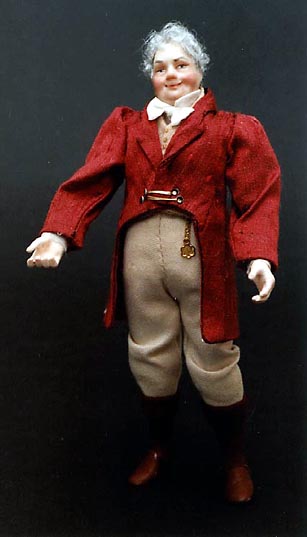
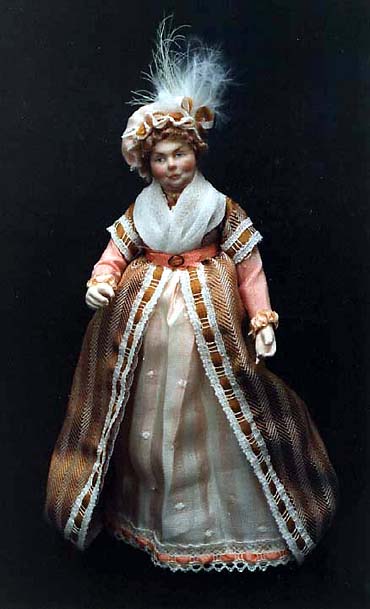
Above, the country squire and his old fashioned lady wife.
The nineteenth century opened with a fashion styles that were changing rapidly away from the styles of the previous century. As in art, Neoclassicism directed fashion as both men and women took their inspiration from classical antiquity. The very high-waisted silhouette in lightweight muslin was the dominant style for women, while young fashionable men looked to the tailors of Britain for a new and more refined look.
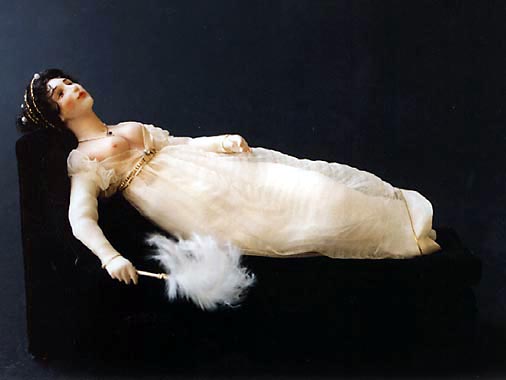
Above, part of the neoclassical ideal was the beauty of the natural, nude body. Stories tell of women leaving off their stays entirely, and appearing with very little underwear at all. This practice was not as widespread in Britain as it was in France.
Below, a Cavalry Officer of 1815 an lady in a ball dress typical of the early part of the 19th century.

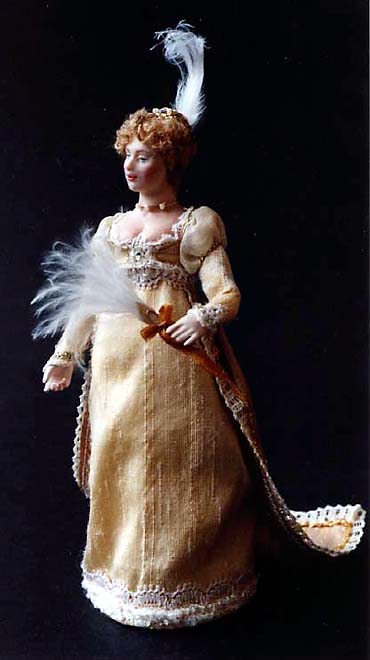
Below, an older gentleman and young lady from 1819.
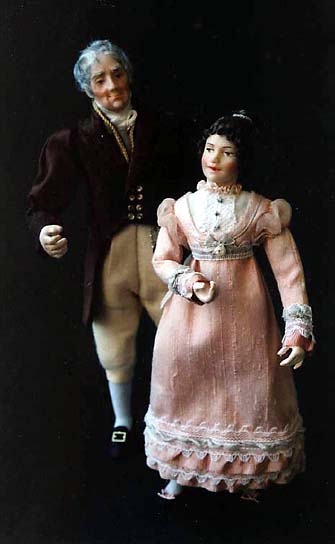
Below, a lady and gentleman in walking dress.
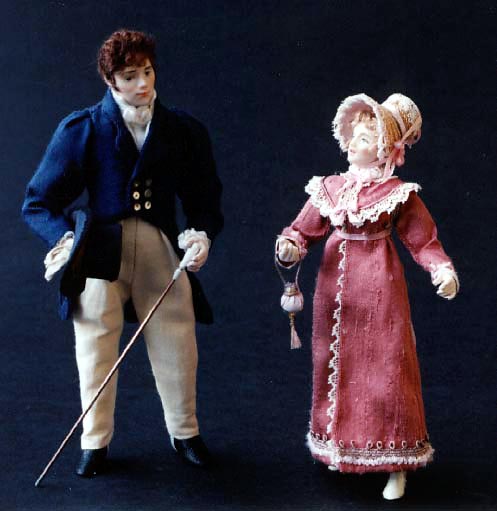
Below, a Field Marshal c.1815 The Army comprised of Cavalry armed with sabre and pistol, Infantry armed with musket, bayonet and Artillery. Regiments were often ill-organiseed and undisciplined Field Marshalls suffered seriously from wholesale desertions.
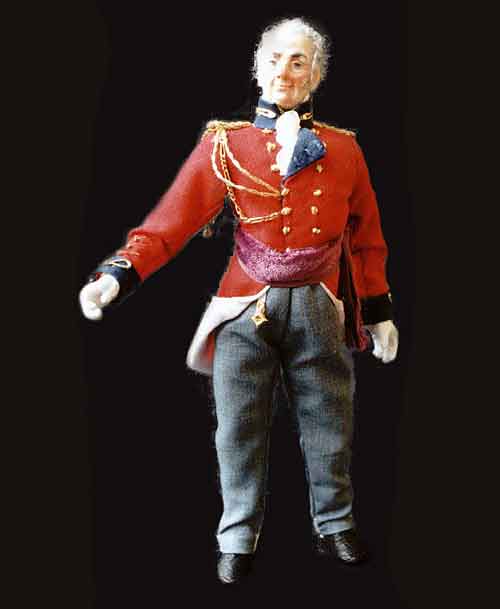
Formed in 1848 the 'Pre-Raphaelite Brotherhood' were rebel artists who painted women in a new way. They often extended a huge power and grace to females in thier paintings, often looking back to imagined mediaeval times. Below we see a lady in the simple dress of a Pre-Raphaelite.
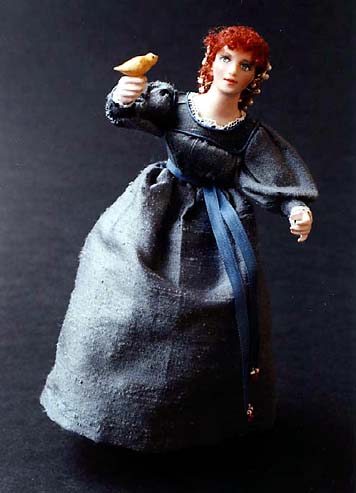
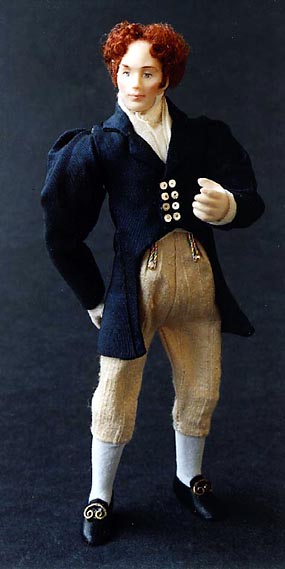
Above, a gentleman of quality
With men, the wig had disappeared and the top hat had replaced the cocked hat.
Development of sewing machines in the 1850s and the invention in 1856 of the artificial cage crinoline. Suspended on cotton tapes, it's cage of light steel hoops increased in diameter as they neared the ground, giving rise to bell shaped crinolines. After 1862 the crinoline changed to a more practical shape being flatter at the front and projecting out more behind. Photographs from the 1860s show that most women wore much smaller versions of the crinoline than those shown in the fashion plates.
Below, a prosperous family in the 1850s, followed by more of the children, who are under the control of a governess in her plain but fashionable dress.
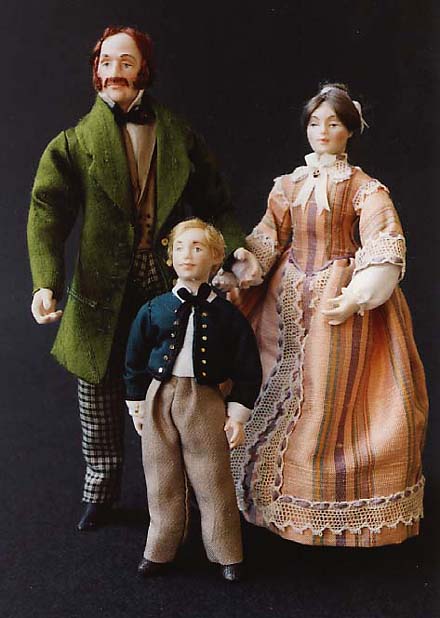
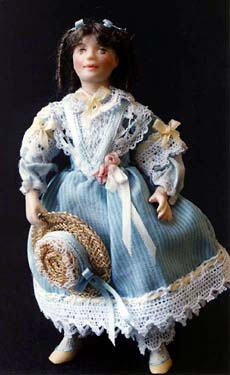
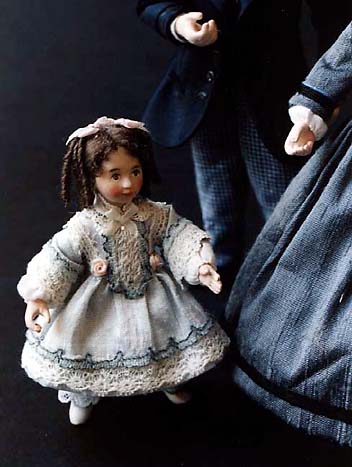
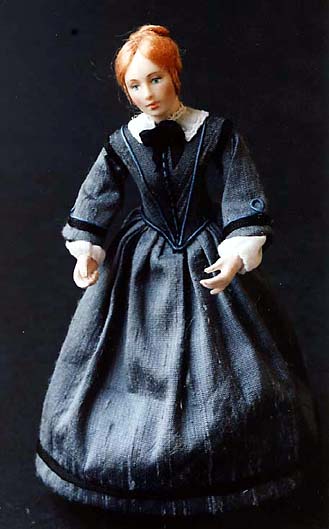
Below, an 1850s family, followed by the great grandmother with her shawl and purse.
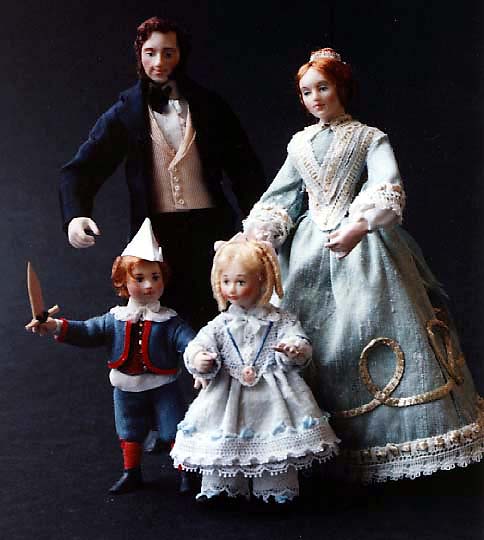
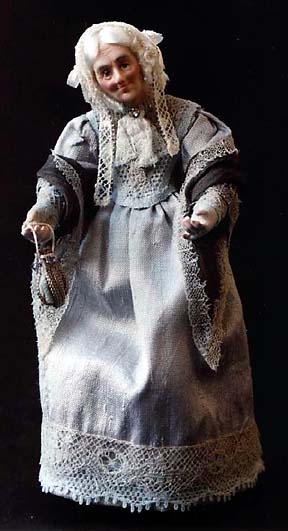
A lady's maid could expect to pay 20% of her first years wages on the purchase of her classic black dress and white apron uniform. She would also be expected to buy and wear a corset.
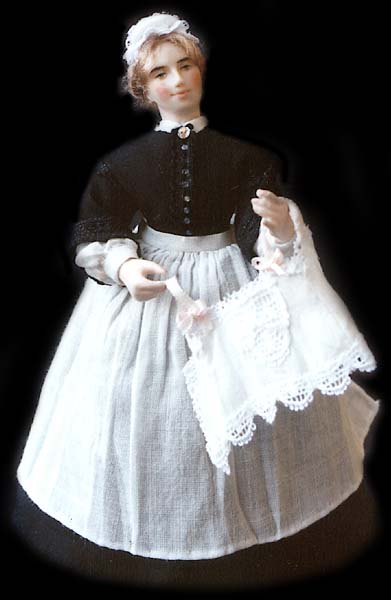
Extract from 'The London Ragamuffin' by Dorothy Tennant (1884)
We cannot shut our ears to the bitter cry of the children; but the rich and prosperous have not the monopoly of happiness, ther is the merry laugh as well as the bitter cry; "for the strong pulse of Life vindicates its right to gladness even here", and the ragamuffin shows himself to be something more than a "sorry creature in rags."
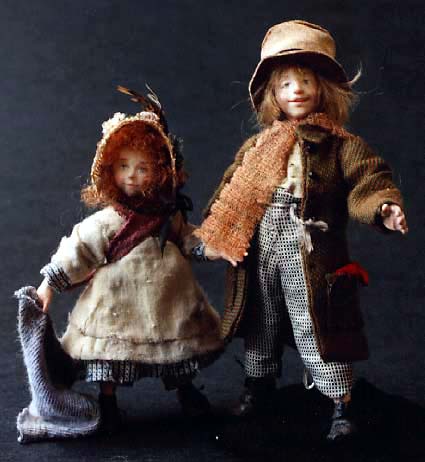
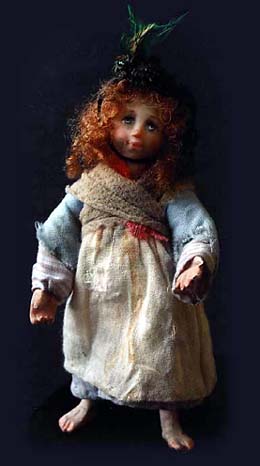
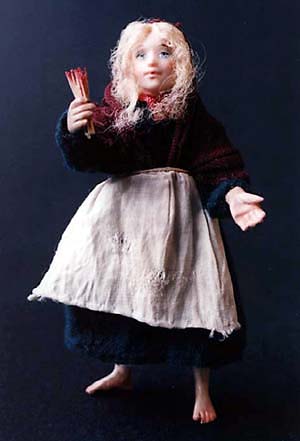
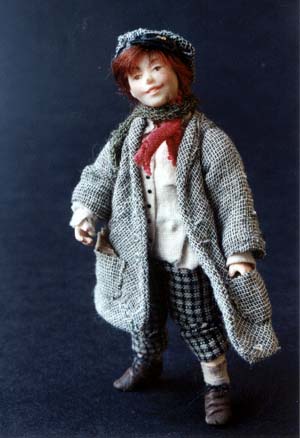
Below, a long-song seller and her little girl..
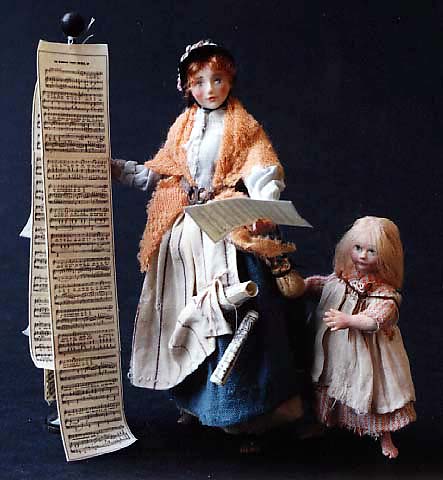
Below, a city madame and her client. Dress reformists and many men of the late 1800s, saw corsets as a dangerous moral ‘evil’, promoting promiscuous views of female bodies. The corset would survive for a short time in the next century, to be finaly replaced by brassieres and girdles.
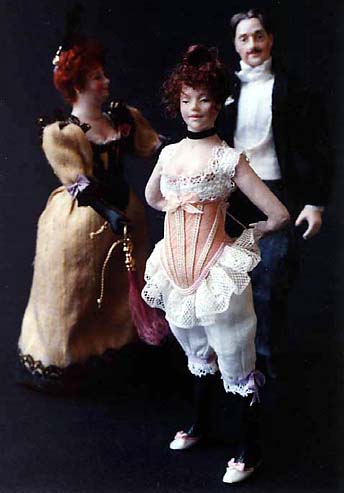
Below a lady with a pink hat and bag c1895.
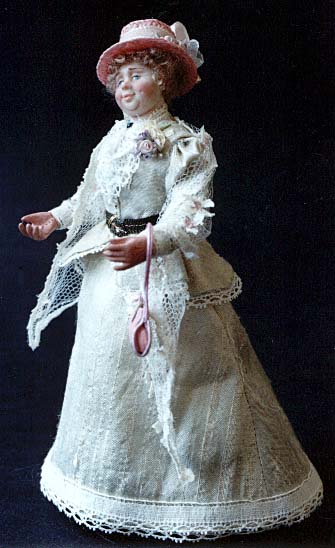
Dolls and top-head illustration by: Jill Bennett (1934 - 2019)